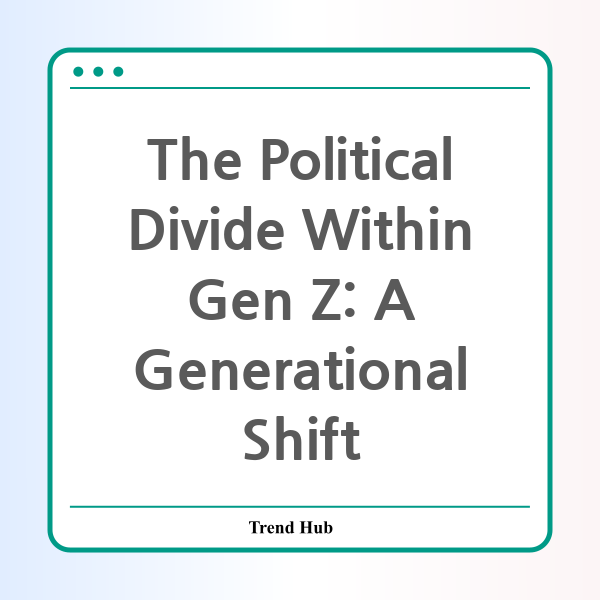* This website participates in the Amazon Affiliate Program and earns from qualifying purchases.

Have you noticed how the political landscape among younger voters has evolved? The rise of Generation Z has not only transformed the social fabric of our society but is also revealing a significant political schism within the cohort. Recent findings indicate a compelling divide between the older segment of Gen Z (ages 22-29) and the younger segment (ages 18-21), sparking discussions about the future of political alignment in America.
According to recent surveys, while younger Gen Zers (aged 18-21) lean towards Republican candidates by nearly 12 points, older Gen Zers have a preference for Democrats by around 6 points. This data challenges the longstanding belief that young voters categorically trend liberal. In fact, it indicates that younger members of this generation hold more conservative views, particularly regarding significant socio-political issues such as transgender rights in sports and U.S. foreign aid policies.
These generational shifts can be attributed to varied formative experiences. The older segment, known as Gen Z 1.0, came of age during the Trump presidency, aligning with movements advocating for racial justice and gender equity. In contrast, Gen Z 2.0, who graduated during or after the pandemic, experienced dramatically different societal conditions. Their perceptions of authority, political correctness, and cancel culture were shaped during a time of heightened restrictions and widespread social media discourse.
The divergence is profound—older Gen Zers have a clearer memory of the impacts of Trump's presidency, while the younger cohort was significantly influenced by the media environment shaped by platforms like TikTok. This app's surge in popularity has resulted in a unique information ecosystem, where users consume political content that often skews towards conservative viewpoints. The transformation in media consumption habits is leading to a notable shift away from the Democratic Party for many young voters.
In addition to media influence, gender dynamics further complicate the political landscape within Gen Z. Recent studies have highlighted a 20-point gender gap in political support among those aged 25 and under, with young men increasingly favoring Republican candidates. This trend signals a critical shift, as young women continue to show support for Democratic candidates, albeit with nuances based on ethnicity. For instance, young white women are trending more conservative compared to their counterparts in 2020, illustrating the fluidity of political allegiance within this generation.
It is essential to recognize that the experiences separating Gen Z 1.0 and 2.0 are not merely statistical anomalies but reflect a broader cultural context that shapes how young Americans engage with politics today. From the impact of the pandemic to the explosion of TikTok as a political forum, these factors are driving a new generation of voters who challenge preconceived notions about youth and political alignment.
As we look towards upcoming elections, understanding these internal dynamics will be crucial for political parties aiming to resonate with this diverse generation. Whether the rightward shift among younger voters gains traction or shifts again towards more liberal ideologies remains to be seen. Still, one thing is clear: there are two distinct Gen Zs, each navigating the complexities of modern politics in their unique ways.
In conclusion, the political divide within Generation Z highlights a critical evolution in American youth culture and their engagement with political ideologies. As the world continues to change rapidly, just which Gen Z we approach for political discourse will matter significantly in shaping the future of our political landscape.
* This website participates in the Amazon Affiliate Program and earns from qualifying purchases.